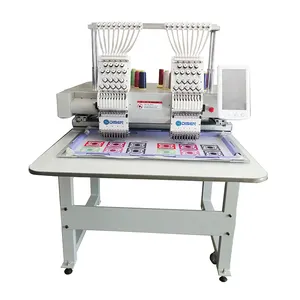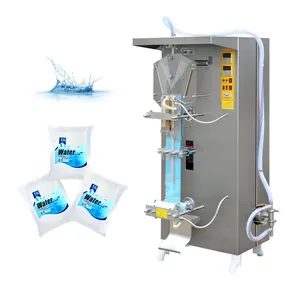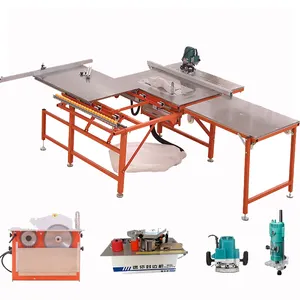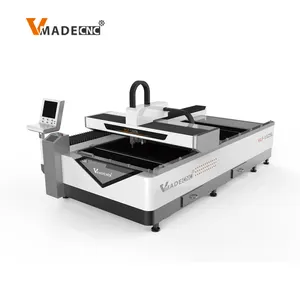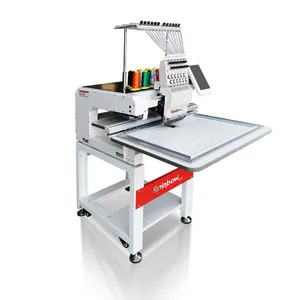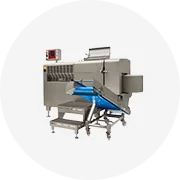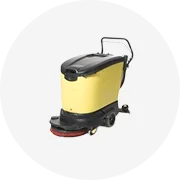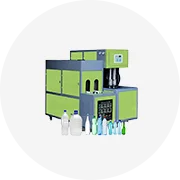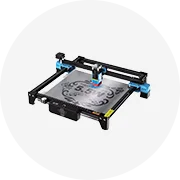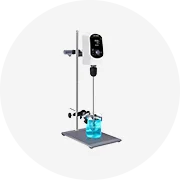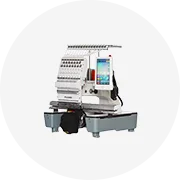Popular en tu industria
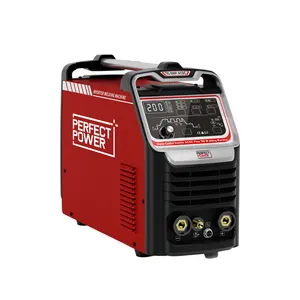





Soldador ACDC TIG portátil de alta calidad inversor soldador TIG de aluminio soldador TIG de pulso máquina de soldadura por arco de argón palo de soldadura mach
EUR 366.47 - EUR 421.34
Pedido mínimo: 1 conjunto






Módulo IGBT de uso industrial Soldadores MIG/MAG/MMA Soldadora MIG de doble pulso de alta velocidad MIG-350
EUR 1,097.53 - EUR 1,264.95
Pedido mínimo: 10 piezas







Máquina de soldadura de tipo inversor, nuevo módulo inversor de pulso MIG/MAG-350 IGBT
EUR 474.36 - EUR 525.52
Pedido mínimo: 1 pieza







Máquina de soldadura láser de fibra manual para Metal 3 en 1 2000W 3000W Máquina de corte de limpieza de soldadura Precio de soldadores láser de fibra
EUR 4,111.09 - EUR 8,138.46
Pedido mínimo: 1 conjunto







Soldadores 4 en 1 MIG/MAG/CO2/MMA Soldadores de uso industrial Soldadores Módulo IGBT Máquina de soldadura de CO2
EUR 539.47 - EUR 632.48
Pedido mínimo: 10 piezas







Máquina de soldadura láser de fibra de mano 4 en 1 1500W 3000W para soldar láminas de acero inoxidable al carbono de metal láminas de latón de aluminio
EUR 4,064.58 - EUR 7,682.71
Pedido mínimo: 1 conjunto







Soldadores MIG/MMA 350 de alto rendimiento 2 en 1, máquina de soldadura Mig con inversor IGBT
EUR 715.26 - EUR 785.95
Pedido mínimo: 15 unidades






Mig 315 Mig 350 Igbt Inverter Co2 Mig Máquina de soldadura
EUR 344.15 - EUR 353.45
Pedido mínimo: 5 conjuntos






Máquina de soldadura de arco de aluminio, gran oferta, NBC 350 500, inversor MIG MAG CO2
EUR 600.86 - EUR 1,082.65
Pedido mínimo: 1 conjunto






Máquina de soldadura MIG-250I inversor Igbt, Mig Mag, MIG 350, Mig 250, lista de precios 15-20l/min, 16-26,5 v, 40-250A, 50/60HZ, 8,4kva, 25kg, azul
EUR 232.53 - EUR 241.83
Pedido mínimo: 10 conjuntos





Función MIG/MMA /TIG 350 Soldadores IGBT Inverter Mig Máquina de soldadura Alto rendimiento 3 en 1 máquina de soldadura portátil sin gas
EUR 35.35 - EUR 51.16
Pedido mínimo: 1 conjunto


Máquina de soldadura Rolwal 315.350 multifunción Syn MIG Inverter
EUR 334.84 - EUR 358.10
Pedido mínimo: 100 piezas
Búsquedas Relacionadas:
inversor igbt mig soldador 350inversor mig soldador 180soldador mig inversor 350asoldadores mig inversor igbtmáquina de soldadura miginversor dc soldador migsoldadura mig panasonicmáquina de soldadura mig350 de soldador migsoldador mig 250 unfabricante de soldador migsoldador mig 350a380 de soldador mig300 de soldador migmáquina de soldadura mig 350a






Alta calidad MIG MAG CO2 máquina de soldadura de 350 amp soldador MIG precio con CE
Listo para enviar
EUR 604.58
Pedido mínimo: 1 conjunto
Envío por pieza: EUR 92.90

YOULI-máquina de soldadura profesional MIG 350 400, inversor, 3 fases, 380 de voltaje
EUR 604.58 - EUR 827.80
Pedido mínimo: 30 piezas

Inversor IGBT mig -350, máquina de soldadura, inversor mig/mag
EUR 818.50 - EUR 1,049.17
Pedido mínimo: 5 conjuntos






DELIXI serie NBC nb 250 de 270 de 350 igbt inversor mig de soldadura soldador máquina
EUR 297.64 - EUR 311.59
Pedido mínimo: 50 piezas











La NBC 350 Ac Dc inversor Mig Tig Mma máquina de soldadura
EUR 418.55 - EUR 437.16
Pedido mínimo: 18 piezas

NBC 350 fisión MIG máquina de soldadura, el nuevo soldador digital MIG
EUR 544.12 - EUR 573.88
Pedido mínimo: 1 conjunto






Ac inversor Mig/Mma 350 IGBT Mig partes de aluminio, máquina de soldadura de arco portátil
EUR 65.10
Pedido mínimo: 50 piezas






Gas gasless mag/mma arc tig 250 270 300 350 amp welder inverter mig welding machine
EUR 364.61 - EUR 371.12
Pedido mínimo: 2 conjuntos





Precio barato de la máquina de soldadura industrial MIG CO2 350 Amp portátil de Amp
EUR 544.30 - EUR 777.58
Pedido mínimo: 1 conjunto






PANERGY Industrial 4 en 1 Aluminio AC/DC MIG MMA 250 300 350 Amp Soldadora de arco de gas Máquina de soldadura
EUR 277.64 - EUR 329.26
Pedido mínimo: 20 piezas






Máquina de soldadura MIG PULSE P MIG 350, máquina de soldadura de aluminio
EUR 195.33 - EUR 232.53
Pedido mínimo: 500 piezas



Precio económico Mig MMA 2 en 1 máquina de soldadura multifunción sin gas MIG 200 250 300 350 soldadores
EUR 26.98 - EUR 30.61
Pedido mínimo: 20 piezas






KENDE nuevo IGBT módulo Digital CO2 NBC MIG 350A separado alimentador de alambre Multi función MIG soldador máquina de soldadura MIG 350
EUR 402.74 - EUR 418.55
Pedido mínimo: 30 conjuntos









MIG 350 MIG MMA máquina de soldadura con protección de gas de dióxido de carbono dividida grado industrial blindado secundario 220V/380V doble propósito
EUR 362.75 - EUR 455.76
Pedido mínimo: 1 pieza





Spark nombres de soldadura forma completa de metal soldador tres en una máquina de soldadura MIG MAG 350 AMP
EUR 418.55 - EUR 744.09
Pedido mínimo: 50 piezas




JUBA-máquina de soldadura inalámbrica de gas pequeño 175, soldador mig 350, 15kg
EUR 297.64 - EUR 418.55
Pedido mínimo: 50 piezas






140/180 MIG 200 AMP AC MIG soldador por puntos 250A soldador 250AMP 350 máquina de soldadura MIG
EUR 11,905.40
Pedido mínimo: 1 conjunto






MIG 350 amp de gas máquina de soldadura de gas Mig 350
Listo para enviar
EUR 333.91 - EUR 336.70
Pedido mínimo: 1 pieza
Envío por pieza: EUR 83.02






4 En 1mig TIG MMA máquina de soldadura MIG soldador pulso 350 AMP 150V-500V IGBT aluminio CO2 soldadores mig inversor máquina de soldadura
EUR 866.87
Pedido mínimo: 10 conjuntos




Mig-soldador Mig de doble pulso, máquina de soldadura sin Gas, 350 Amp, sin Gas, inversor Igbt, Mig-350
EUR 1,610.61
Pedido mínimo: 1 pieza






MOSDAR MIG-350 Pantalla LCD sinérgica Máquina de soldadura MIG Soldador MIG 350 Amp Máquina de soldadura inversor digital
EUR 493.89 - EUR 549.70
Pedido mínimo: 2 cartones






Soldador Inverter Mig Mag Mcu MIG 350, máquina soldadora de gran potencia para uso industrial, soporte de vídeo, servicio posventa
Listo para enviar
EUR 358.10 - EUR 399.95
Pedido mínimo: 5 piezas
Envío por pieza: EUR 63.01






Portátil NBC-270A Dual IGBT módulo inversor DC mig co2 hitbox mig 200 máquina de soldadura de 350 amp
EUR 333.91 - EUR 348.80
Pedido mínimo: 5 conjuntos






Soldador de aluminio MIG de doble pulso, máquina de soldadura de 380V AC DC inversor MMA electrodo MAG eléctrico Soudeuse MIG 350 AMP, venta al por mayor
EUR 1,013.82 - EUR 1,320.76
Pedido mínimo: 1 conjunto






Soldador de doble uso MIG/NBC industrial de doble módulo, máquina de soldadura MIG de 350 amperios, para uso industrial
EUR 307.77 - EUR 310.66
Pedido mínimo: 10 piezas






350a 500a 350 500 AMP 350amp 500amp máquina de soldadura mig de aluminio de doble pulso
EUR 585.97 - EUR 651.08
Pedido mínimo: 1 conjunto
Categorías principales
Sobre máquina de soldadura mig 350
Explore las enormes variedades de eficiente y robusto. máquina de soldadura mig 350 en Alibaba.com con facilidad para diversas aplicaciones de soldadura. Estos dispositivos modernizados improvisan tecnologías de vanguardia para garantizar funciones de soldadura óptimas y duraderas. Los. Los máquina de soldadura mig 350 disponibles en el sitio están cargados con funciones avanzadas para hacer que el proceso de soldadura sea más fácil y conveniente. Puede utilizar estas máquinas para operaciones comerciales e industriales debido a su calidad superior. Líder. Los proveedores y mayoristas de máquina de soldadura mig 350 ofrecen estos productos a precios asequibles y descuentos interesantes.
Los brillantes conjuntos de. Los máquina de soldadura mig 350 accesibles en el sitio están hechos de materiales duraderos como el carbono y el acero inoxidable para una mayor resistencia y sostenibilidad frente a interferencias externas. Estos productos son ecológicos y vienen con distintas capacidades de voltaje según el modelo. Puede conformarse con. máquina de soldadura mig 350 que integran la tecnología de funcionamiento por inversor para lograr la máxima eficiencia energética. Estas. máquina de soldadura mig 350 también se aplica para aplicaciones de servicio pesado como soldar un ferrocarril.
Alibaba.com ofrece muchas variaciones de. máquina de soldadura mig 350, incluidos diferentes tamaños, funciones y otros aspectos exclusivos según los requisitos del modelo individual. Estas. máquina de soldadura mig 350 puede soldar acero, hierro, cobre y muchos otros metales con precisión y exactitud. Con garantías de calidad y períodos de garantía de los proveedores, estos. máquina de soldadura mig 350 son económicos para uso comercial. Las características adicionales incluyen anticorrosión, impermeabilidad y resistencia a temperaturas extremadamente altas.
Compre dentro de su presupuesto y ahorre dinero con lo distinto. máquina de soldadura mig 350 segmentos en Alibaba.com. Estos productos tienen garantía de calidad y se pueden personalizar según sus requisitos. Aproveche los servicios posventa, que pueden incluir la instalación experta de los productos.
Los brillantes conjuntos de. Los máquina de soldadura mig 350 accesibles en el sitio están hechos de materiales duraderos como el carbono y el acero inoxidable para una mayor resistencia y sostenibilidad frente a interferencias externas. Estos productos son ecológicos y vienen con distintas capacidades de voltaje según el modelo. Puede conformarse con. máquina de soldadura mig 350 que integran la tecnología de funcionamiento por inversor para lograr la máxima eficiencia energética. Estas. máquina de soldadura mig 350 también se aplica para aplicaciones de servicio pesado como soldar un ferrocarril.
Alibaba.com ofrece muchas variaciones de. máquina de soldadura mig 350, incluidos diferentes tamaños, funciones y otros aspectos exclusivos según los requisitos del modelo individual. Estas. máquina de soldadura mig 350 puede soldar acero, hierro, cobre y muchos otros metales con precisión y exactitud. Con garantías de calidad y períodos de garantía de los proveedores, estos. máquina de soldadura mig 350 son económicos para uso comercial. Las características adicionales incluyen anticorrosión, impermeabilidad y resistencia a temperaturas extremadamente altas.
Compre dentro de su presupuesto y ahorre dinero con lo distinto. máquina de soldadura mig 350 segmentos en Alibaba.com. Estos productos tienen garantía de calidad y se pueden personalizar según sus requisitos. Aproveche los servicios posventa, que pueden incluir la instalación experta de los productos.
